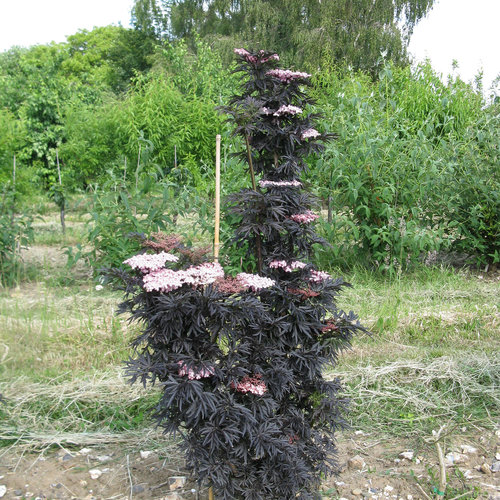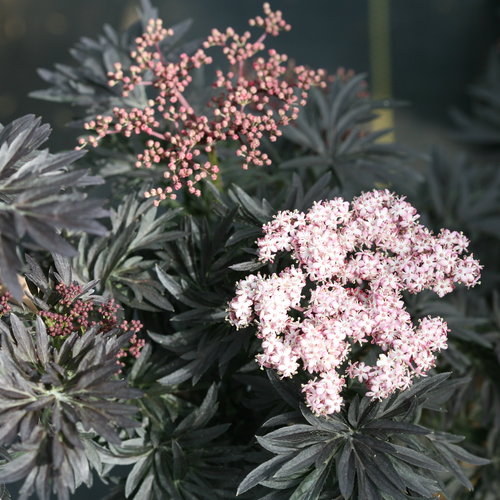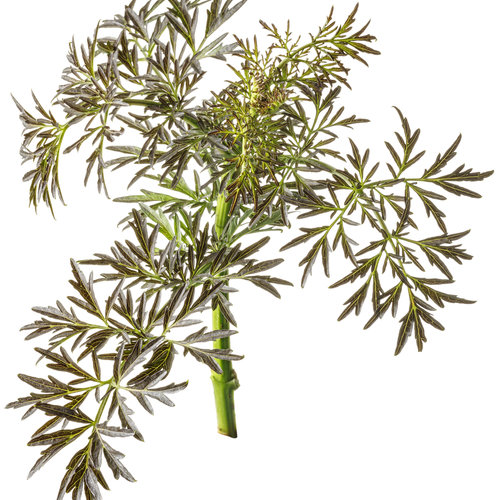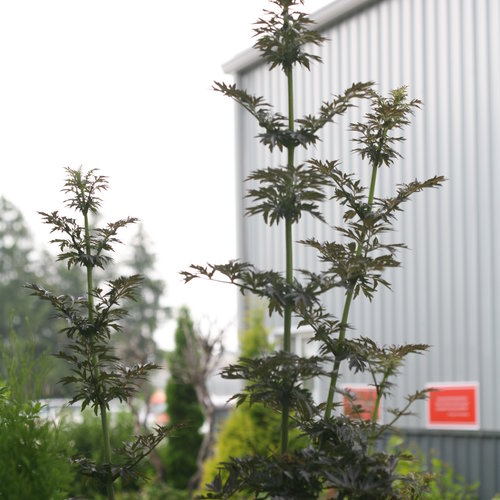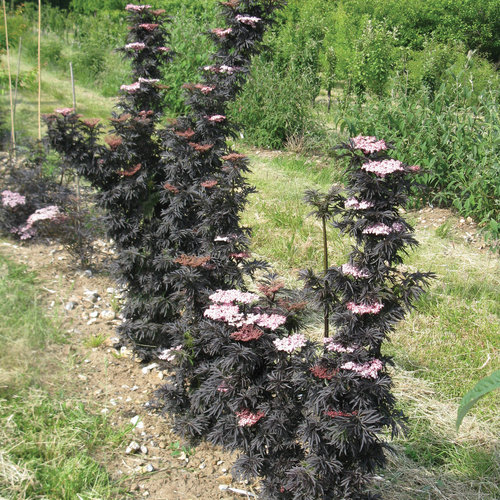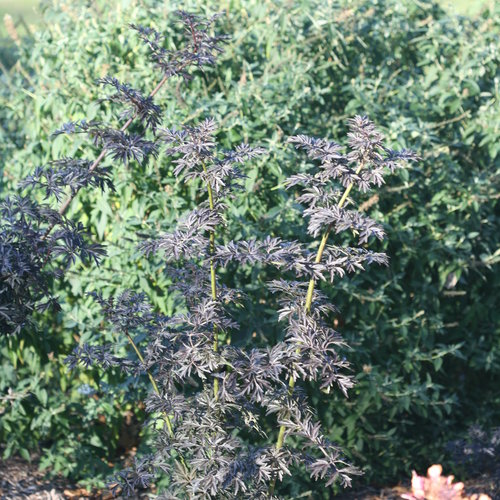Planted and it began to grow, then a deer chomped it and it"s dead. Would need to use deer netting to protect it for the first years if I tried it again.
Laced Up® Elderberry Sambucus nigra
- Part Sun to Sun
- Sun
- Spring
- Summer
- Fall
-
72 - 120 Inches48 - 72 Inches36 - 48 Inches1.8m - 3.0m1.2m - 1.8m91cm - 1.2m
Features
An elderberry like no other!
Beautiful elderberries like Black Lace® and Black Beauty® have long been some of our most popular varieties - but as fairly large plants, not everyone has space for them. Enter Laced Up® elderberry, an amazing narrow, upright variety that takes up only a few square feet of ground. Feathery black foliage covers broomstick-straight stems that shoot toward the sky but stay in a narrow column. Early summer brings hundreds of pink flowers to contrast with the leaves. It's an exotic looking plant that's surprisingly hardy and easy to grow! Available in better garden centers in spring 2018. This plant was formerly known as Strait Laced® elderberry.
Top reasons to plant Laced Up® elderberry:
- Columnar habit takes up far less space than other elderberries
- Elegant, feathery black foliage provides unmatched color and texture
- Pink flowers in early summer
Produces BerriesFoliage InterestResists:DeerRabbitsHarmful To:PetsCharacteristics
Plant Type:ShrubShrub Type:DeciduousHeight Category:TallGarden Height:72 - 120 Inches 1.8m - 3.0mSpacing:48 - 72 Inches 1.2m - 1.8mSpread:36 - 48 Inches 91cm - 1.2mFlower Colors:PinkFoliage Colors:BlackFoliage Shade:BlackHabit:UprightContainer Role:ThrillerPlant Needs
Light Requirement:Part Sun to SunLight Requirement:SunThe optimum amount of sun or shade each plant needs to thrive: Full Sun (6+ hours), Part Sun (4-6 hours), Full Shade (up to 4 hours).
Maintenance Category:EasyBlooms On:Old WoodBloom Time:Early SummerHardiness Zones:4a, 4b, 5a, 5b, 6a, 6b, 7a, 7bWater Category:AverageUses:Border PlantUses:ContainerUses:Good for ScreeningUses:LandscapeUses:Specimen or Focal PointUses Notes:With its unusual columnar habit, there are practically limitless landscape uses for Laced Up™ elderberry. It works well in pairs as a formal planting at entryways or in containers; it also makes a quirky and eye-catching specimen in any landscape or garden.
PLEASE NOTE: To produce berries, you'll need a Black Lace®, Instant Karma®, or Black Beauty™ as a pollinator
Maintenance Notes:Laced Up® elderberry is very easy to care for. It does not need regular pruning, but any dead wood should be removed in early spring. Any errant shoots can be pruned out to the ground as needed. Plant in full sun for best color and shape. This plant is not recommended for warm climates.
All elderberries are toxic to pets and livestock. Because the foliage has a distinctive scent, however, animals tend to leave it alone.
Looking for berries? You will need Black Lace elderberry as pollinator.
Fun Facts:The term "strait laced" refers to a specific method of lacing shoes, corsets, or other apparel so that it could be quickly cut off the wearer in the event of an emergency.
Laced Up® Sambucus nigra 'SNR1292' USPP 29,051, Can PBRAF 6,310 -
51431211Browse reviews from people who have grown this plant.
-
Nijay, Pennsylvania, United States, 4 years ago
-
Elderberries are prone to aphids. I believe that may have been the issue the first reviewer had. I spray my elderberries two or three times in early spring (prior to blooming) with a Neem oil. I then follow up by releasing ladybugs directly on the plant and 20 feet away from the plant. It’s easier to prevent a infestation than to treat one. Mine have always been prolific bloomers and provide stunning foliage up until late November in my 6b zone. Get the “Laced Up” variety if you don’t have a lot of space.
Theodosia, 4 years ago -
This is a beautiful plant, just don't plant near a door or window as it smells like cat urine when it blooms. Also, it is prone to little black bugs that at first look like part of the plant growing on the stems. It kills them. I have lost every one of mine and I have had three to these pests. I don't know what they are but they love this plant. You will know if you see parts of your leaves dying. Spraying with a Dawn and water solution helped for awhile. Maybe I needed to reapply it more often. Mine grew so big and beautiful and then it started doing this. It took the last plant I had before I noticed these pests. They are hard to see. If I knew what to use to kill them, I would buy another of these very stunning and beautiful plants.
kimberly schmitz, Illinois, United States, 6 years ago
-



